I recently provided a detailed tier list or ranking system for the new factions in Civilization VI: Gathering Storm. One of the new civs which I felt was an “S-tier,” and at the highest rank is Hungary. Truth be told, the leader Mattias Corvinus and the country’s history intrigued me even before the game launched. How badass does one have to be to earn ” The Raven King” moniker, right? And it seems Corvinus’ military and diplomatic skills knew no bounds, even in Civilization VI: Gathering Storm. Every playthrough I had led to success, steamrolling opponents without any issues.
So, I decided to share one particular playthrough to show just how amazing Hungary is in Civilization VI: Gathering Storm. Hopefully, you’d give this nation a try and decisively plow your way through history before Firaxis decides to nerf its abilities. I’ve included some images of my playthrough to act as a mini guide explaining my decisions.
My settings are as follows:
- Deity difficulty.
- Pangaea – Large map size.
- Seven opposing civs.
- Ancient Era starting point.
Opening Moves
The starting area I had was fairly generous. There were several bonus resources to help with production, along with luxury resources for extra gold and amenities. These two are extremely important when playing as Hungary. To make the most out of the civ’s unique bonuses, you’d need a lot of gold to levy city-state units and amenities to keep your cities happy and growing.
From there, I scouted and discovered three city-states: Cahokia, Antananarivo, and Armagh. Cahokia was a priority since it was a Trade-type city-state that provided gold. The other two weren’t necessary for my playthrough, but extra troops helped.
While scouting, I also discovered that I was next to Scotland (Robert the Bruce), Mongolia (Genghis Khan), and Macedonia (Alexander). On Deity difficulty, the AI has significant bonuses such as extra troops, settlers, builders, techs, and civics. They’re also more likely to declare war. It seems I was lucky since Genghis and Bobby both decided to play passively. Alex was focused on city-states.
Amani Hopping
Hungary’s unique game-changing trait is that it gives bonus movement and combat strength to levied units. Levied units can also be upgraded for free. Lastly, you gain envoys each time you levy from a city-state, effectively “locking” that city-state (CS) with you as suzerain. But this advantage can be overcome if the AI decides to send all its envoys to it. So, to maximize this perk, you’ll want to do some “Amani hopping.”
Amani, one of the governors in Civilization VI: Gathering Storm, adds two envoys when she’s assigned to a CS. Later promotions double the number of envoys you have in a CS. “Amani hopping” simply means assigning her to a CS, becoming suzerain, levying units for free envoys, and then re-assigning her to another CS to repeat the process.

I became Cahokia’s Suzerain early on. Armagh needed only one envoy, and I doubt I’d even fulfill Antananarivo’s request. I sent Amani there.
You’ll also need to acquire State Workforce and Early Empire as quickly as possible. These civics give you a governor slot and promotion, as well as the ability to construct a Government Plaza.
With this strategy, I had near-unassailable control of the three city-states mentioned after barely 50 turns. Researching Iron Working is also necessary, since the technology gives you swordsmen. Hungary lets you do free upgrades, so I turned all the levied units into swordsmen. That’s when it was time to go to war.

11 turns after what transpired in the previous image, I already locked down three city-states. Hong Kong would be next.
The Scottish War
Bobby Bruce looked surprised. His realm was defended by a handful of Scottish warriors that were no match for extra-buffed levied swordsmen. The bonus movement and combat strength for levied units helped them to easily traverse the plains between Cahokia and Scottish territory.

“An army levied for a single purpose: to destroy the World of Scots.” Too bad Robert the Bruce doesn’t have Ents.
At turn 56, I saw an opportunity to strike and got a free settler in the process. At turn 73, Scotland was no more.
Aside from scouts, the only military units I had were one warrior, three archers, and one spearman. Hungary’s usage of levied units means that you can focus more on city-building without the need to churn out military units consistently.
It also means that you can expand by way of all the cities you’ve conquered, barely concerning yourself with making your own settlers. I churned out one settler, which was plopped it on top of a Cocoa luxury resource adjacent to a river. The settler I nabbed from Scotland, was moved to a northern valley surrounded by two rivers.
Hungary has another bonus which provides 50 percent extra production for districts and buildings across rivers from a city center. Settling cities adjacent to rivers anyway so this is just icing on the cake.

I used the captured settler to kickstart my new ventures to the north. Cahokia could easily act as a buffer in case Mongolia decided to attack. The city-state kept churning out new units and the levy cost was too pricey at the moment.
The Macedonian War
I saw that Alexander had his eyes set on Hong Kong. Since Genghis Khan seemed more passive, I decided to punch the Macedonian pretty boy in the face. You only have control of levied units for 30 turns unless you lose suzerainty of a CS, and my timer was running out.
By turn 81, Scotland’s former territories were already producing Commercial Hubs and markets, as well as new traders. Around this time, I also pushed a vote in the World Congress to gain double the gold output from trade routes to Trade city-states. I ended up sending a majority of the traders I recruited to Cahokia.

Before my levy duration was done, I blitzed Alexander’s cities. I did lose control of some units (and even a captured city), and I had to restart to make sure I made the right decisions.
But I also flubbed up and forgot about Cahokia’s levy turn timer, so I lost control of those units. Since I was still their suzerain, they happily became a buffer against enemy troops. This almost turned into a disaster, but I was able to salvage the situation by buying off the troops from Armagh and Antananarivo.
At turn 97, Alexander might as well be in India. He drew his last breath. As a funny aside, I neglected one of his cities, Alexandria, which ended up flipping loyalties and turned into a free city.
The Mid Game
While taking out Alexander, I made sure that I was also heading straight for Gunpowder technology. With it, I could turn all my swordsmen into musketmen. Although I only had one niter mine in my territory, it didn’t matter since levied unit upgrades were free.
I needed an armory to get Gunpowder quickly. It just so happened that Buda, my capital, was already in the process of building one. Likewise, I needed the Monarchy civic to gain more policies for my government. It also unlocks the tier 2 buildings for my Government Plaza. One of those buildings, the Foreign Ministry, halves the cost of levying units. Since it was the easiest tier 2 government to obtain, I grabbed it and began constructing a Foreign Ministry.

I preferred the Merchant Republic government for a majority of playthroughs (for most civs actually). But Monarchy was the easiest to obtain.
I also noticed that Hong Kong had seven archers. I upgraded all of them into crossbowmen for free. Imagine the AI with club-wielding warriors while you suddenly send your crossbowmen into the fray. Good times! I also started recruiting a couple of Hungarian Black Army unique units. These light cavalry units gain extra combat strength when surrounded by levied troops.
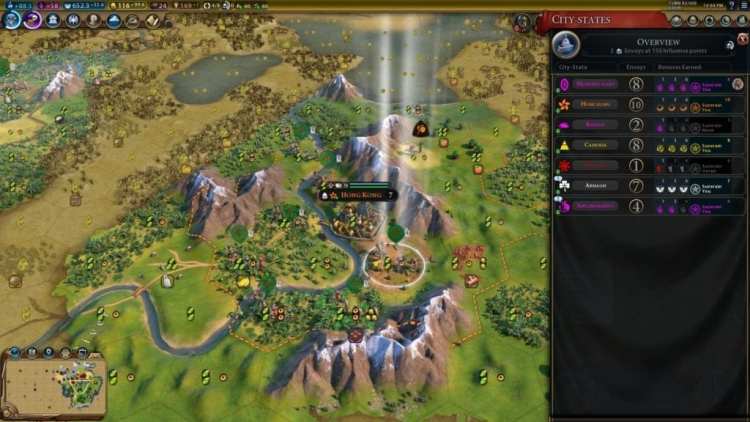
I lost my suzerainty over Hong Kong for a short time. I then regained it and realized that they recruited over half a dozen archers. Those are multiple free crossbowmen right there!
Turn 100
Conquests help boost your science and culture generation, especially when all you need to do is repair the AI’s old buildings. With dominance in the field, and the ability to flip city-states constantly or gain suzerainty, I was increasing my Era Score without problems. I found myself getting Golden Ages without fail. I was leading the pack in starting in the Medieval Era and didn’t lose my place.

My policy choices for the Monarchy government. I’ll eventually switch to a Merchant Republic for extra gold bonuses. I’m almost finished with the Alhambra wonder (which adds an extra military policy slot anyway).
At turn 100, I had full control of almost every city-state I encountered. In the East, my crossbowmen army is arrayed against Mongolia’s outdated units. Cahokia’s troops, which were quite costly before, were now mine again.
In the West, Gorgo was at war with Mohenjo-Daro. I snatched up the troops and prepared for war. Amani is being kept busy, assigned to and fro at various city-states. It takes about four turns to become suzerain. In the meantime, I’ll try to avoid the temptation to go on a killing spree with my musketmen.

Looks like I’ll be going to war on two fronts. To the East, there’s Gorgo. I’ll eventually liberate Buenos Aires and levy troops later.
In the southern area, it looks like Gorgo neglected one of her settlers and it’s ripe for the picking for that levied swordsman. My troops are taking a breather from whomping Alexander, but they’ll be ready to advance soon.
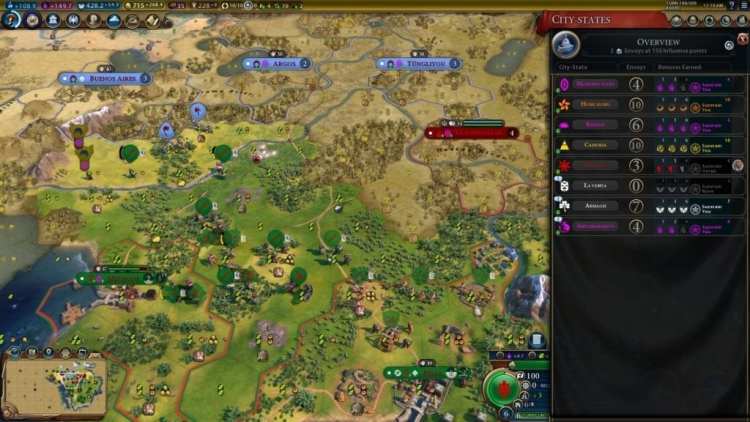
Make that three fronts. Gorgo’s newest cities are the “soft underbelly” of this continent since they lack walls.
The Bottom Line
Hungary has near-unlimited potential in Deity difficulty. The playthrough above shows you two opposing civs already destroyed by turn 100. Two others, Mongolia and Sparta, will suffer the same fate given that my levied units are way more advanced. Norway, Khmer, and one more civ I’ve yet to meet will likely collapse in due time.
Although the choice of a Pangaea map might be a boon for domination civs, the mere fact that it’s still on Deity means the AI has distinct advantages. Being able to effectively counter those advantages is a must. However, Hungary would be at a severe disadvantage if you don’t encounter city-states or if they’re located on distant islands.
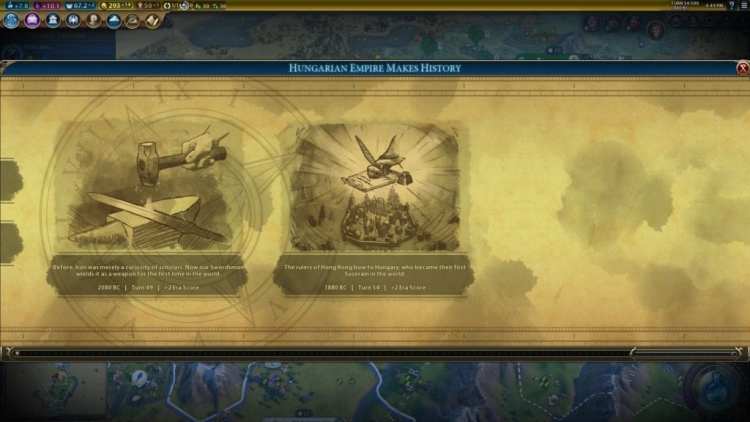
City-state flips, suzerain grabs and snatches, and boosting your tech all lend a hand to earning Golden Ages.
In any case, by focusing my building up my cities instead of unit production provided additional flexibility in dealing with an ever-changing situation. I was able to build the Apadana and Kilwa Kisiwani wonders, which were beneficial to the envoy-levying strategy. I also had more time to focus on Commercial Hubs, which meant free-flowing gold to levy with. Religion and culture weren’t necessary, but I did build a couple of Entertainment Districts to help boost the amenities.
That extra flexibility is all due to using city-states not just as a buffer, but as an unstoppable war machine that swarms the AI. By using Amani to hop around and play with city-state loyalties, you’ll maximize the nation while playing aggressively, conquering your neighbors and building your era score as you go.
Mattias Corvinus might be known in history as “The Raven King.” As of this moment, he also rules the Domination game in Civilization VI: Gathering Storm. Although most competing civs won’t like you, it doesn’t matter since your best friends are the city-states. For best results, try a team game with a friend playing as Mali (Mansa Musa). You provide the muscle, your friend provides the gold.

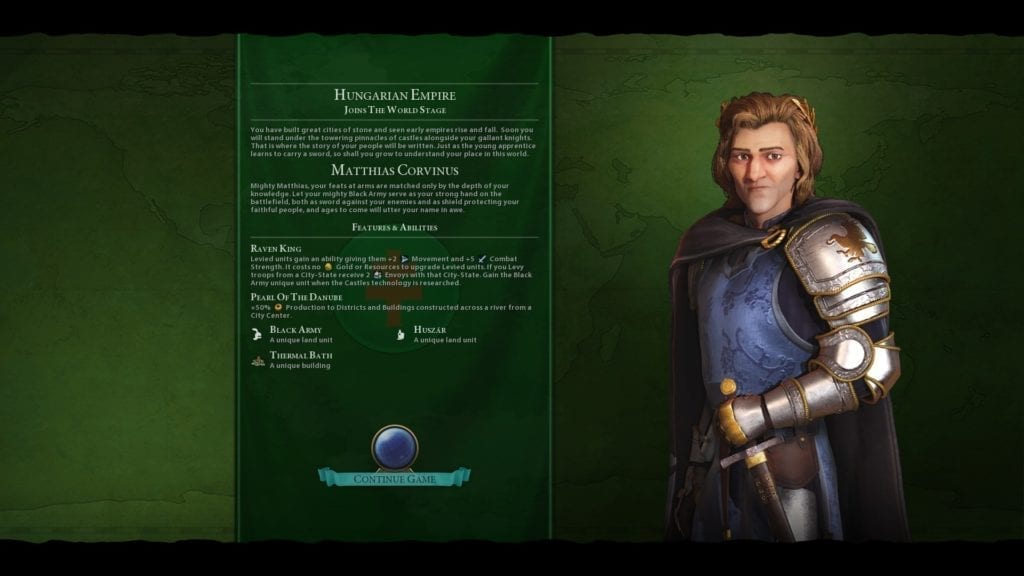
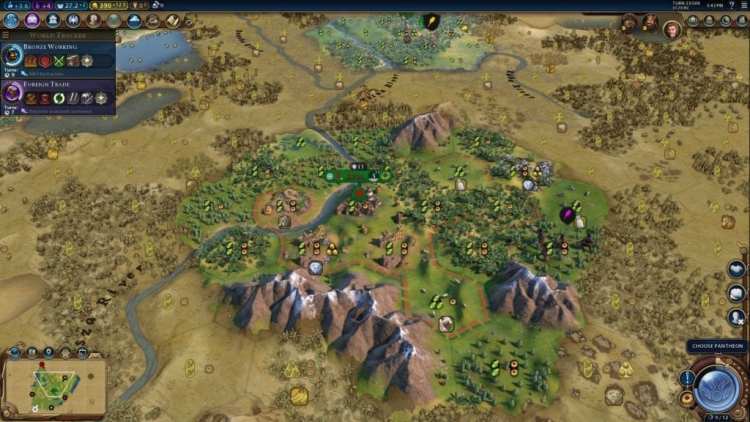

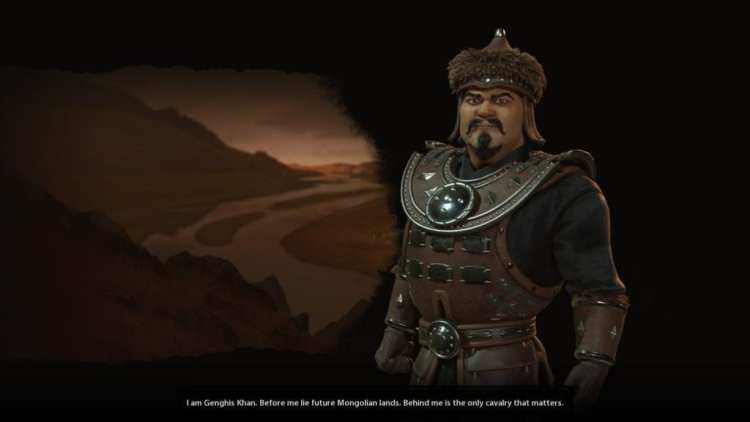
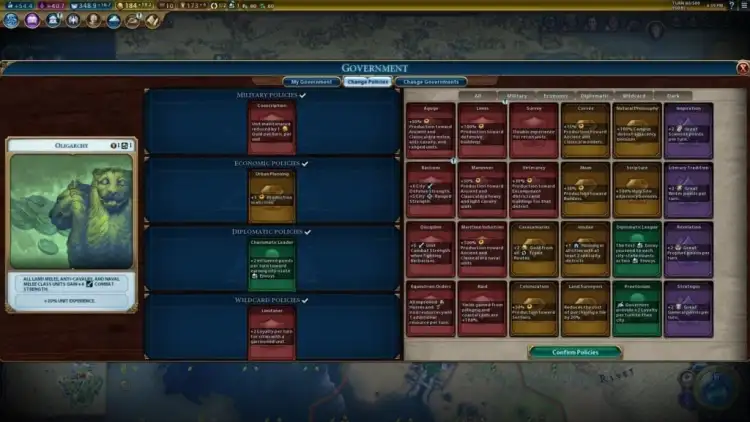
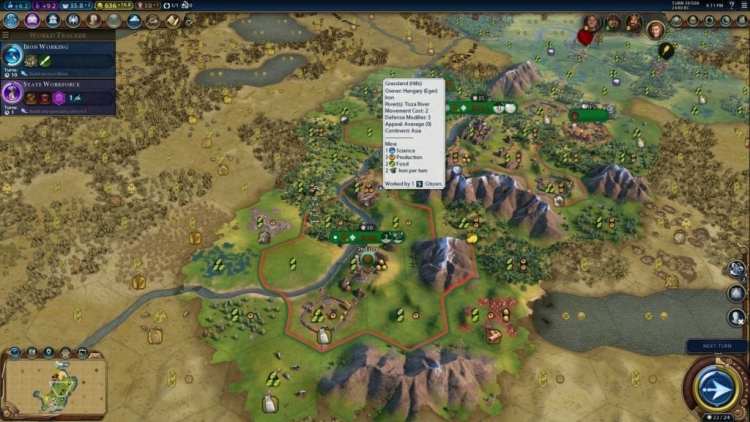
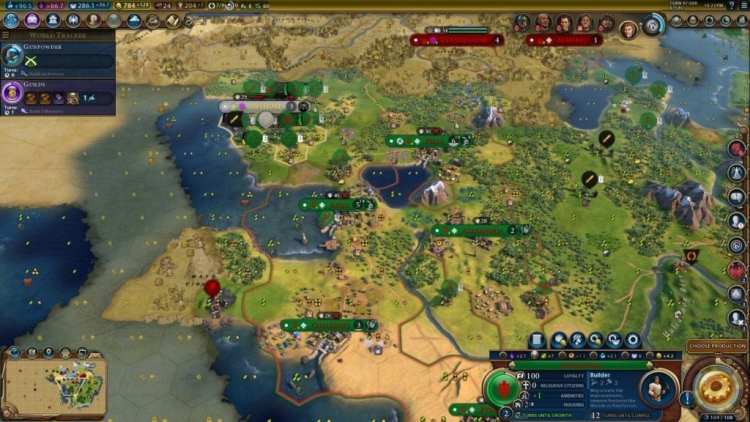
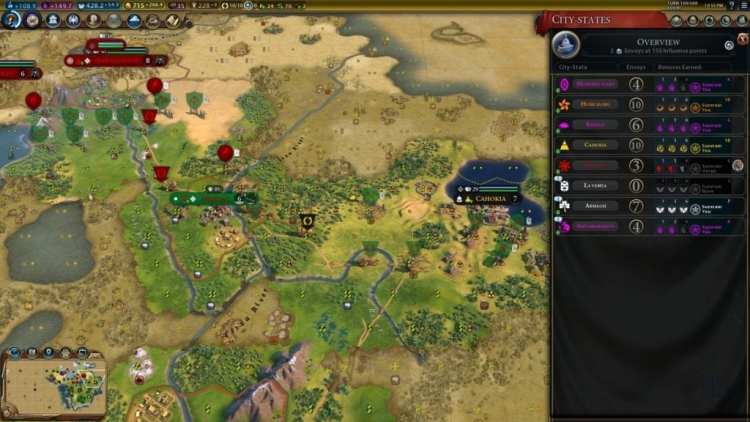





Published: Feb 27, 2019 7:00 PM UTC